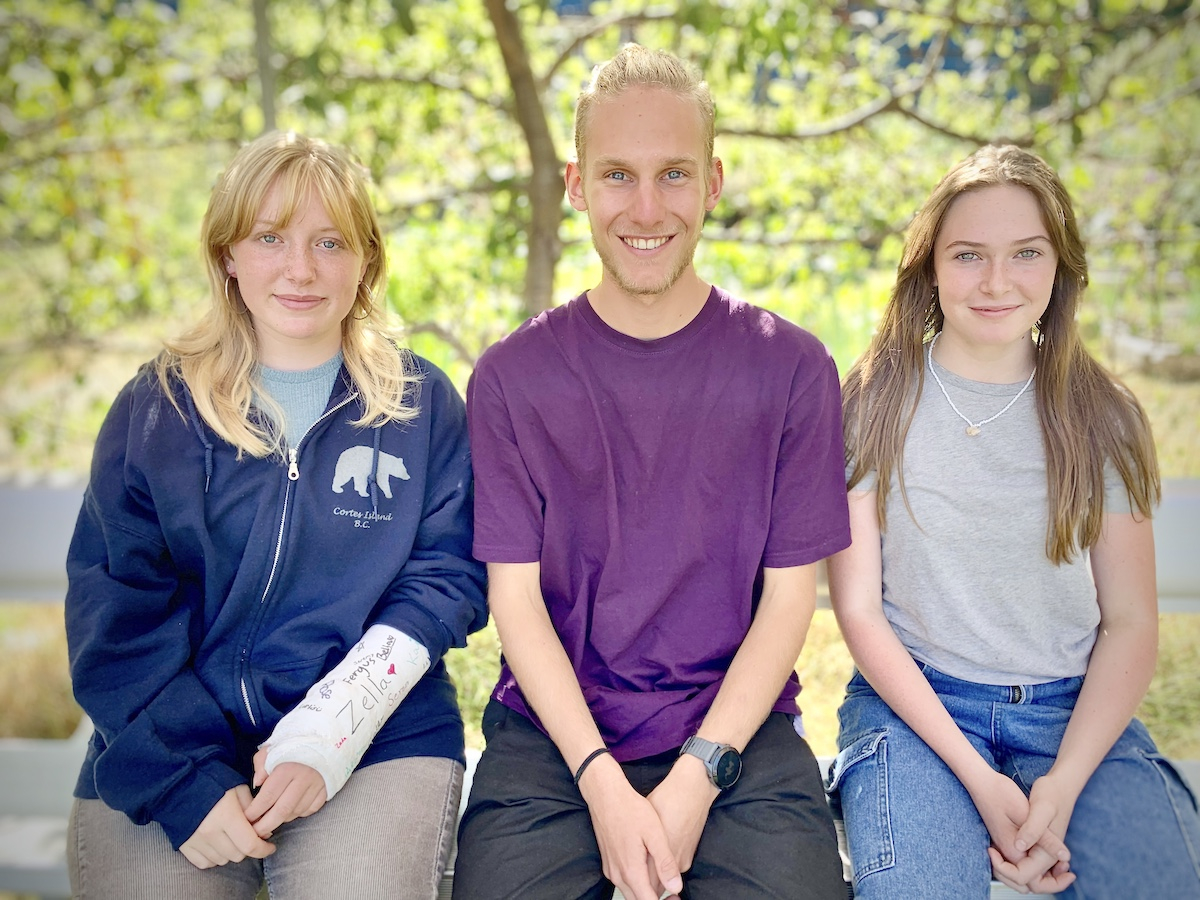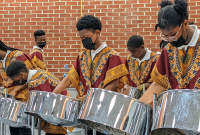Support strong Canadian climate journalism for 2025
A tiny B.C. island is charting a new course for rural education to keep families from abandoning the community to ensure their kids can attend high school.
This fall, the Cortes Island community and School District 72 are piloting a half-year of public high-school programming shaped by students’ interests, community expertise and the surrounding environment, said Manda Aufochs Gillespie, one of the project’s organizers.
Wedged between B.C.’s remote central coast and Vancouver Island, Cortes Island has just over 1,000 residents. The community’s sole school typically has about 50 students and only goes up to Grade 9. The nearest secondary school in Campbell River on Vancouver Island is a long, two-ferry journey away, which isn’t feasible on a daily basis.
This has prompted many families to leave the island and move closer to a high school. The alternative is to pay a minimum of $1,000 a month or more to board their kids somewhere in Campbell River and only see them on weekends.
Having to fork out that kind of cash to secure a supposedly public education, and having your kids living away from home to get it, raises social justice concerns and questions around equitable access to education, said Aufochs Gillespie.
Rural and remote communities, such as Cortes, often have lower average household incomes and a larger proportion of Indigenous students, she noted.
“I find it shocking the lack of outrage people have about this lack of access to education,” Aufochs Gillespie said.
Students escape ‘lonely’ classrooms
But youth attending the new high-school program mostly relish being in a learning community made up of their peers.
Rose Goulet would have been one of the few teens and the sole Grade 9 student attending the island’s school if not for the academy.
“There’s no one on Cortes that’s my age in school in winter,” the 14-year-old said. “Being in that classroom is kind of lonely.”
In total, 20 youth from Cortes and other outlying islands and even a couple of international students are attending the new Cortes Island Academy — which, despite its name, is a free public school program.
Seren Anderson, 14, also lives on Cortes but has been home-schooling. She’s also happy to get some “high-school experience” and to learn in a group or class.
“I thought that it’d be really different, but it feels normal to me,” Anderson said.
“It's pretty cool to have more kids my age here, and I hope more come and get to do the program.”
Gaps persist for B.C.’s rural and Indigenous students
Almost a third of B.C.’s public education students attend schools outside the urban centres of Greater Victoria, the Lower Mainland and Kelowna, a B.C. government rural education report showed.
But on average, rural students’ high school graduation rates six years after starting Grade 8 were 7.7 per cent below their urban peers as of the 2015-16 school year, that report found.
Indigenous students' high-school graduation rates have improved 6.3 per cent over five years, but significant gaps remain compared with non-Indigenous peers.
Only 72 per cent of Indigenous students completed high school last year compared to 90 per cent of all B.C. students.
Curriculum reflects Cortes’ strengths

The Cortes program is approaching rural education by tapping community strengths and place-based learning, said Jeff Lontayao, the school district teacher involved in the project.
The program relies on Cortes’ natural surroundings, local Indigenous knowledge and a student’s individual curiosity, while still meeting the provincial curriculum, he said.
Many urban public school districts offer “academies'' that reflect students’ interests, but they typically focus on single extracurricular subjects, such as art, robotics or a particular sport. And it costs to attend, sometimes into the thousands of dollars for elite sport academies.
But students attending the Cortes program can obtain a number of different credits, including for core subjects such as English or science, said Aufochs Gillespie.
“It’s really out of the box,” she said.
This fall, Cortes high school students will study marine conservation and outdoor adventure leadership through kayaking expeditions and scientific field studies, Lontayao said.
In the second half of the program, students will produce films and podcasts with island professionals and members of the Klahoose First Nation to hone communication, storytelling and technical skills while getting credits in new media and English.
But the Cortes academy, while free to school district students, doesn’t come cheap, said Aufochs Gillespie
More than $200,000 was fundraised from the Cortes community and beyond for extra operating and programming costs not covered by the school district.
In addition to strong support from residents wanting to stem “brain drain” from the island, constructing the program with the school district was key, she added.
“We have a district superintendent deeply committed to the possibilities of rural education,” she said.
Diverse rural communities require unique solutions
Each rural community has individual strengths and challenges that require customized education solutions, said Leyton Schnellert, a professor with the University of British Columbia’s pedagogy department and co-chair of the B.C. Rural Education Advisory.
The best outcomes usually depend on partnerships between school districts and the communities involved, Schnellert said.
“Then we can get creative … and offer something pretty powerful, but it really is moving beyond the norm and understanding of what high school education is.”
The pandemic — which demanded experiments with a mix of hybrid, online and classroom learning — has shaken up notions of what a standard education should look like and where it takes place, he said.
A place-based education program in a rural community such as Cortes is an achievement, he said.
The sustainability of innovative programs can be a challenge, but they can also morph and adapt to endure, he said.
Once communities and districts begin crafting imaginative strategies for rural education, there’s often no putting the genie back in the bottle, he said.
Rochelle Baker / Local Journalism Initiative / Canada’s National Observer






Comments